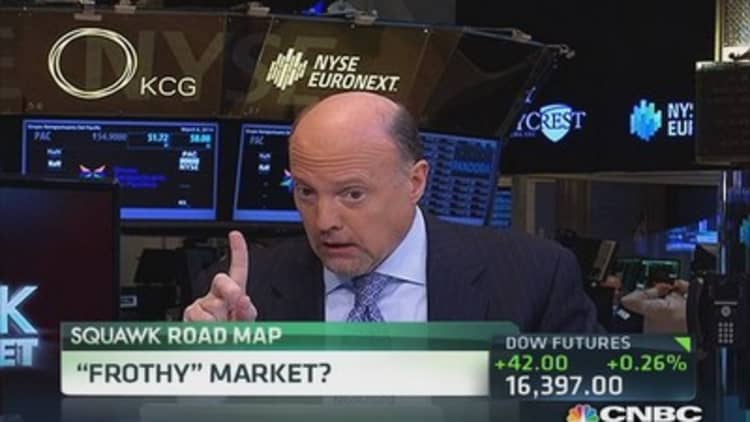The amount of cash market participants are borrowing to buy up more stocks continues to climb to record highs, leading some to grow increasingly concerned that a market pullback could be around the corner.
This borrowing - known as margin debt – occurs when stock brokerage firms lend to their investors to fuel more spending on securities and has risen to "uncharted territory" on the New York Stock Exchange (NYSE), according to U.S-based research company TrimTabs.
"Bears beware," said TrimTabs chief executive David Santschi in a research note on Monday. "Rising margin debt is a bullish indicator in the TrimTabs Demand Index this week."
(Read more: Playing with fire? Margin debt most since crisis)
The indicator climbed to $452 billion in January, it said, the seventh consecutive month of all-time highs. It increased by 1.4 percent from December, 36 percent from an interim high of $381 billion set in July 2007, and has rallied 63 percent from the interim low of $278 billion set in July 2012. Margin debt has almost doubled on the NYSE since the start of 2000.
This climb has coincided with a rise in equity markets - the hit another record high on Friday. The index has risen 1.6 percent this year despite a moderation of central bank liquidity and concerns over Ukraine. Last year the S&P 500 clocked gains of nearly 30 percent.
But there remains some debate as to whether this margin debt indicator is actually a negative sign. Investors might be so confident in the market that funding their purchases from other sources will mean that they'll be able repay their debts and pocket a nice profit as markets rise. On the flipside, investors might be so confident that they're willing to take risks and over leverage themselves and accentuate any future market correction.
(Read more: Is a peak coming in this key market metric?)
Andy Ash, a director at brokerage firm Monument Securities believes that this margin debt surge increases the chances of a "severe" market pullback.
"I'm definitely concerned," he told CNBC via telephone. "With liquidity being taken away this year we should be very nervous."
Ash explained said that it would be very hard to time any potential pullback. He warned there was no genuine gauge as to when this margin debt could suddenly become unsuitable. "We could still be talking about it in a year's time," he said.

(Read more: What the bull market has meant for Europe)
A recent surge in new issuances in stock markets and the oversubscription of corporate debt are reasons why investors might be taking on more and more debt, he said. He added that investors that were over leveraged might not necessarily be one-way exposed to the market, with plenty of short products available. Data by Bloomberg also show that free credit balance – the amount of cash available to withdraw in customers' margin accounts – has remained steady since the beginning of 2009.
Despite these positive signs Ash says his general outlook is that this "cheap money" has led to a probable bubble. He fears investors won't be able to judge when to get out of their positions.
—By CNBC.com's Matt Clinch. Follow him on Twitter @mattclinch81.


